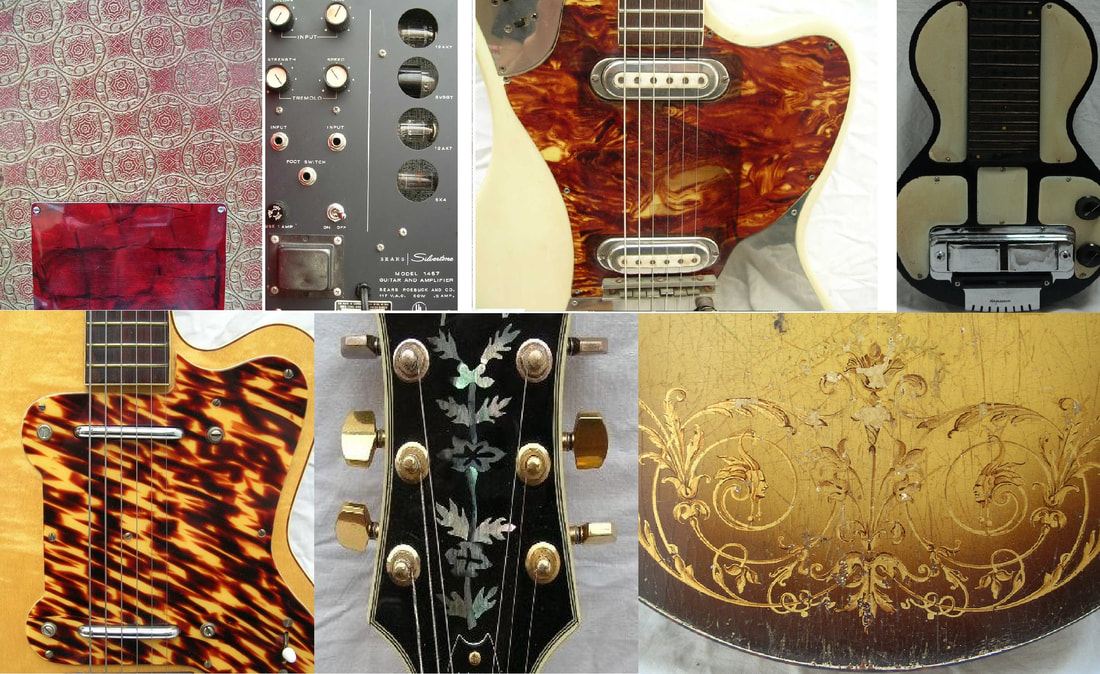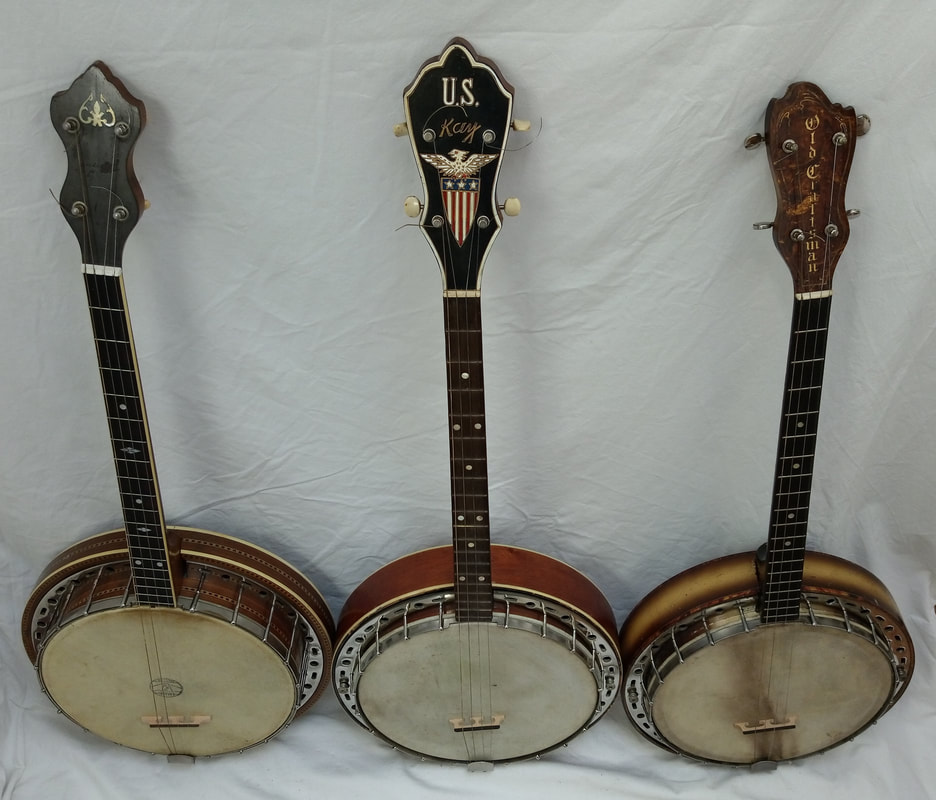Guitars and other fretted instruments 1920-1970: 50 years of growing popularity
The collection encompasses over 500 items, for the most part guitars as well as other plucked instruments, but also vintage amplifiers, record players, straps, leads, plectrums, catalogues, tutors, etc. It can be exhibited as a whole or in part for a fascinating journey covering fretted instruments in the western world between 1920 and 1970. Don’t look for the nec plus ultra Gibson Super 400 or the rarest Fender Stratocaster on the market. Here, you can learn more about the instrument you play or the music that you like, where it originates from, how it really sounds and why people shouldn’t settle for a clone with a thick layer of polyurethane varnish. |
TWO STORIES, TWO COLLECTIONS
Instrument
|
Every week a particular instrument from the collection will be highlighted. You get to see exampes from chapters that have not yet been published on this website as a kind of preview. It will make you extremely curious and hungry for more.
|
Tenor banjos (1920-1970)
|
In 1907 the J.B. Schall Company of Chicago[1] advertised a 4 string “banjorine” with mandolin tuning. What was later to be called the tenor banjo was first called “mandolin banjo” or “tango banjo”, and only became successful after WW1.
Just as with guitars, most of these banjos’ origin can be brought back to just a few companies, Often the peghead is the best reference point , |
© COPYRIGHT 2015. ALL RIGHTS RESERVED.


